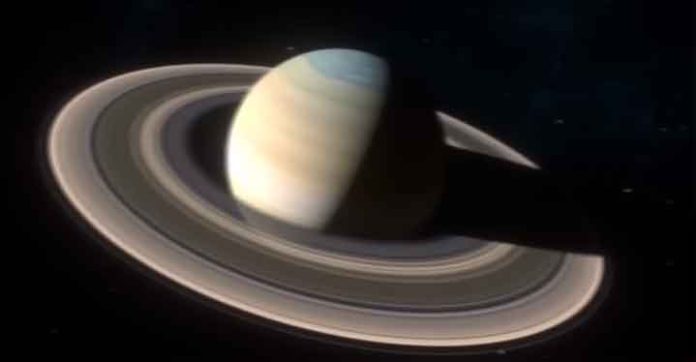This comprehensive article will discuss the fascinating science behind the rings of Saturn. Saturn’s rings will explore the structure and how the rings of Saturn contribute to the unique characteristics of the planet Saturn. Discover the Latest Findings and Must Read This Article and Enjoy
Saturn, the sixth planet from the Sun, is known for its beautiful and unique rings. These rings have fascinated astronomers and space enthusiasts for centuries. But what exactly are these rings, and how did they form? In this complete guide, we will explore the mystery behind Saturn’s rings and try to uncover some of the secrets that this planet holds.
Saturn is the second-largest planet in the solar system, and it is best known for its rings. These rings were first observed by Galileo in 1610, but it wasn’t until the Voyager 1 and 2 missions in the 1980s that we got a close-up look at them. The rings are made up of ice particles, rock debris, and dust, and they span over 280,000 km in diameter. In this complete guide, we will explore the mystery behind Saturn’s rings.
The Formation of Saturn’s Rings
The formation of Saturn’s rings is still a mystery, but there are a few theories that scientists have come up with. One theory suggests that the rings were formed from a moon that got too close to Saturn and was torn apart by tidal forces. Another theory suggests that the rings are the remnants of a comet or asteroid that got too close to Saturn and was pulled apart by its gravity. Whatever the cause, it is believed that the rings have been around for billions of years.
The Composition of Saturn’s Rings
Saturn’s rings are made up of a variety of materials, including water ice, rock debris, and dust. The ice particles are thought to be from the moons of Saturn, which have been shattered by impacts with comets and asteroids. The rock debris is thought to be from the rings themselves, which have been eroded over time by collisions with other particles. The dust is thought to be from meteoroids that have entered Saturn’s atmosphere and burned up.

The Features of Saturn’s Rings
Saturn’s rings are divided into several different sections. The main rings are labeled A, B, and C, with the Cassini Division separating the A and B rings. There are also several smaller rings, including the D, E, and F rings. The rings vary in thickness, with the A and B rings being the thickest, and they are also different in color, with the C ring being darker than the others.
The Mysteries of Saturn’s Rings
Despite decades of study, there are still many mysteries surrounding Saturn’s rings. One of the biggest mysteries is how they maintain their shape. The rings should have dispersed by now due to gravitational interactions with Saturn’s moons, but they remain intact. Another mystery is why the rings are so bright. It is thought that the ice particles reflect sunlight, but the exact mechanism is still not fully understood.
FAQs
Q: How many rings does Saturn have?
A: Saturn has several rings, including the A, B, C, D, E, and F rings.
Q: How were Saturn’s rings formed?
A: The formation of Saturn’s rings is still a mystery, but it is believed that they were formed from a moon that got too close to Saturn and was torn apart by tidal forces.
Q: What are Saturn’s rings made of?
A: Saturn’s rings are made up of ice particles, rock debris, and dust.
Q: Why are Saturn’s rings so bright?
A: The exact mechanism behind the brightness of Saturn’s rings is still not fully understood, but it is thought that the ice particles reflect sunlight.
Conclusion
Saturn’s rings have fascinated us for centuries, and they continue to hold many mysteries.
From their formation to their composition and unique features, scientists have been studying Saturn’s rings for decades. Yet, there is still so much we don’t know about these beautiful structures.
One theory suggests that the rings are relatively young, only a few hundred million years old. This theory suggests that the rings were formed from a comet or asteroid that was captured by Saturn’s gravity and eventually torn apart. However, this theory is still widely debated, and there is no consensus among scientists about how Saturn’s rings were formed.
One of the most intriguing mysteries surrounding Saturn’s rings is their longevity. The rings are constantly bombarded by meteoroids, and their particles should have dispersed by now due to the gravitational forces of Saturn’s moons. However, the rings remain intact. Scientists are still trying to understand how the rings maintain their shape and why they are so stable.
Another mystery is the brightness of the rings. While it is widely believed that the ice particles reflect sunlight, the exact mechanism behind this is not fully understood. Some scientists believe that the rings’ bright appearance may be due to electrically charged particles in the rings’ plasma environment.
The rings also have a unique feature known as spokes, which are dark radial markings that appear in the B ring. These spokes were first observed by the Voyager spacecraft in the 1980s, and scientists still don’t fully understand what causes them. It is believed that the spokes may be caused by the interaction between the rings and Saturn’s magnetic field.
Despite the many mysteries surrounding Saturn’s rings, they remain a source of fascination for astronomers and space enthusiasts alike. These beautiful structures continue to captivate us, and we will undoubtedly learn more about them as we continue to explore our solar system.
In conclusion, Saturn’s rings are one of the most intriguing and beautiful features in our solar system. Their formation, composition, and features have puzzled scientists for centuries, and there is still so much we don’t know about these fascinating structures. However, with new technology and ongoing research, we may one day uncover the secrets behind the mystery of Saturn’s rings ?














